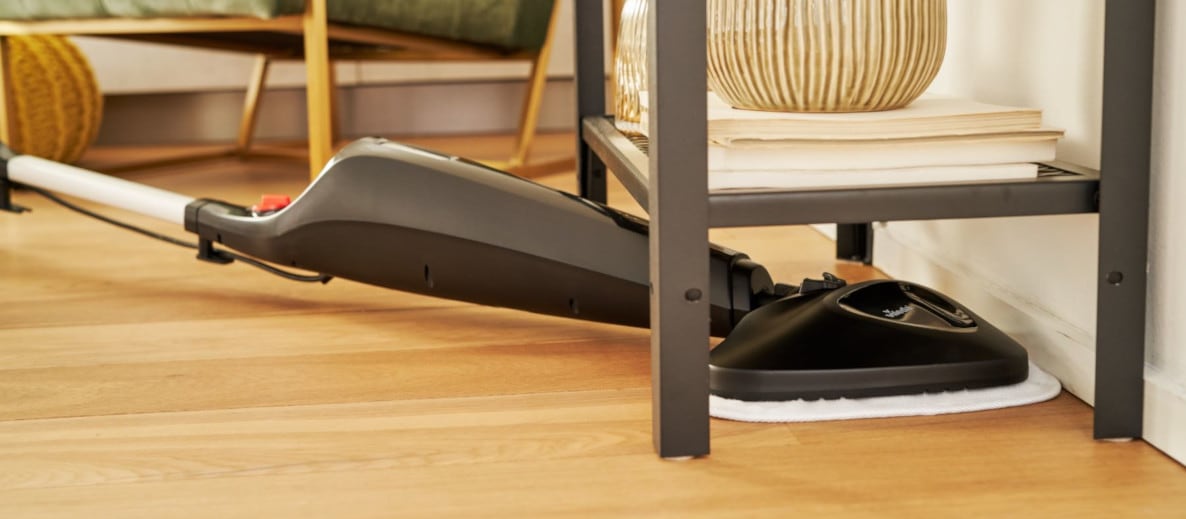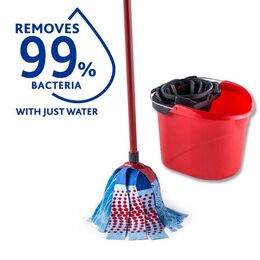How to Clean Wood Floors Carefully and Deeply

If you have wood floors, you know that they require special care and attention. You also know that keeping them clean can be a challenge, especially if you have kids or pets. But don't worry - we're here to help! In this post, we'll share our top tips for cleaning your wood floors carefully and deeply. So grab your mop and bucket, and let's get started!
WHAT IS THE BEST WAY TO CLEAN WOODEN FLOORS?
Cleaning wooden floors is not just about aesthetics; it's essential for maintaining the longevity and beauty of your flooring. From deep cleaning techniques to handling stubborn stains and exploring natural cleaning options, discover how to effectively remove dirt, grime, and stains while avoiding common pitfalls that could damage your wood floors.
How to deep clean wooden floors
Deep cleaning your wooden floors twice a year not only preserves their beauty but also reduces dirt and grime build-up.
Clean your floor with an anti-dust broom and a long-handled dustpan to get rid of dust, hair, and other particles in one sweep. Daily sweeping and dusting helps to prevent your floors from scatching. In addition, spot clean promptly. Clean up spills as they happen with an absorbent cloth.
Dip a mop into the cleaning solution till damp, not soaked. Mop your floor cautiously to avoid water puddles, which can degrade wood. Control the amount of dampness. Mopping your wooden floor is imperative to help prevent the wood from degrading over time. With Vileda cleaning systems the moisture of the mop can be controlled by you, making sure you are cleaning according to your floor type. The moisture content of the mops can be optimally determined according to your floor type.
Check your cleaning product's instructions. Check the floor manufacturing manual: Some wooden floors may advise the best way to clean your wooden floor. This could be only using water, the Vileda Mop Heads can remove 99% of bacteria with just water, making these a brilliant cleaning tool for your wooden floors.
Finally, let your floor air dry. You can hasten this process by turning on the heating or opening your windows.
Cleaning old wooden floors without damage
Maintaining the charm and finish of old wooden floors requires careful cleaning. Here's a simple guide:
Start by sweeping or vacuuming off dust, dirt and debris. Use high-quality brooms and brush sets for efficient cleaning.
Treat dirt spots or loose debris using a dry mop and a concentrated cleaner. Avoid bleach or excessive finishing products as they may discolour or damage your floors.
For stubborn stains, use a damp cloth, ensuring it's wrung out properly.
For oiled flooring, use an oil-based treatment to keep it from drying out.
Lastly, prevent unnecessary wear and tear by establishing a shoe-free policy. Regular maintenance is vital!
Remember, over-saturation with water can lead to warping or cracking your wood.
Pro tip: Always start cleaning in a small, less visible area to ensure the cleaner doesn't discolour or damage your floors.
How can we get stains out of hardwood floors?
When it comes to removing stubborn stains from hardwood floors, having the right tools at your disposal can make all the difference. Quality floor care products like mops, and brooms, such as those offered by Vileda, can be invaluable allies in your battle against stains while taking care of your floors.
Get paint off wood floors
Paint splatters happen, right? When paint meets your wooden floor, don't stress. Here's how to deal with it:
Using a few drops of dishwashing liquid mixed with hot water, wet a cloth and scrub the paint spot. Wipe it off with a dry rag as it loosens.
Being stubborn? Try a gentle scrape with an old credit card.
For tough, oil-based paint, consider an eco-friendly, citrus-based paint remover.
Remember: always follow the floor oil and dishwashing liquid mix with a mild or pH-neutral cleaner. Avoid harsh chemicals; they might damage the floor. Stay consistent with your floor's original oil colour when choosing a cleaning product. Happy cleaning!
Get wax off the wood floor
Start by understanding the importance of proper wax removal from wood floors. Crayon marks, chewing gum, and candle wax on your floor can mark its look and potentially harm its finish if not treated correctly.
Utilise ice to your advantage. Put a few ice cubes in a bag and place it over the wax until it's brittle.
Scrape off the brittle wax carefully with a plastic spatula. Be gentle to avoid stripping your floor's protective finish.
if you accidently strip the wax off and end up damaging the finish of the floor, use a soft cloth to reapply solvent-based hardwood floor wax, buffing the area until it shines.
Regular biannual deep-cleaning of your floor helps to maintain its look and longevity. Don't wait to see grimy build-up; stay ahead of it.
Tips to clean a wooden floor naturally
When it comes to maintaining the timeless charm of your hardwood floors, natural cleaning solutions can be your most trusted allies. Among these, white vinegar stands out not only for its eco-friendliness but also for its remarkable effectiveness in lifting dirt and grime. Discover the art of preserving your wooden floors' beauty while keeping them clean with these valuable tips.
Clean wooden floors with white vinegar
Are you cleaning wooden floors naturally? Vinegar is your friend. Not only is it more sustainable, it's cheap and effectively lifts dirt from your hardwood floors.
Start by making your cleaning solution. Add equal parts of vinegar and water to the bottle and 10 drops of essential oil. Shake the mixture to combine properly.
Before you begin, do a spot test—vinegar can sometimes dull some hardwood finishes.
Once you're sure it's safe, dampen your mop with the vinegar solution. Never soak the mop; too much water can damage the wood.
Mop the floor, following the grain of the wood for the best results.
Using a lemon essential oil will help to bring a fresh scent to the floors as you clean. Lemon is also effective at cutting through grime.
Allow the floor to air dry—the vinegar smell will disperse as it dries.
Remember, vinegar's efficacy lies in its dilution. Don't risk harming your hardwood with a stronger mix.
How to remove scuff marks
Dirt isn't always the main culprit. When you move furniture or wear shoes indoors, you may notice scuffs on your hardwood floors. Luckily, they can easily be rubbed away with some elbow grease.
To remove a light scuff, buff it out with a sock or a clean, fuzzy tennis ball.
To remove heavier scuffs, apply baking soda to a damp sponge and gently rub the mark until it disappears. Rinse with a damp paper towel and buff dry.
Can you steam-clean wooden floors?
Although steam cleaners can sanitise many surfaces, they don't suit hardwood floors. The vapour's high temperature and moisture level can discolour, warp, or even crack the wood, especially if not properly sealed.
Conclusion
In conclusion, maintaining clean and well-preserved wood floors requires careful attention and the use of appropriate cleaning methods and products.









